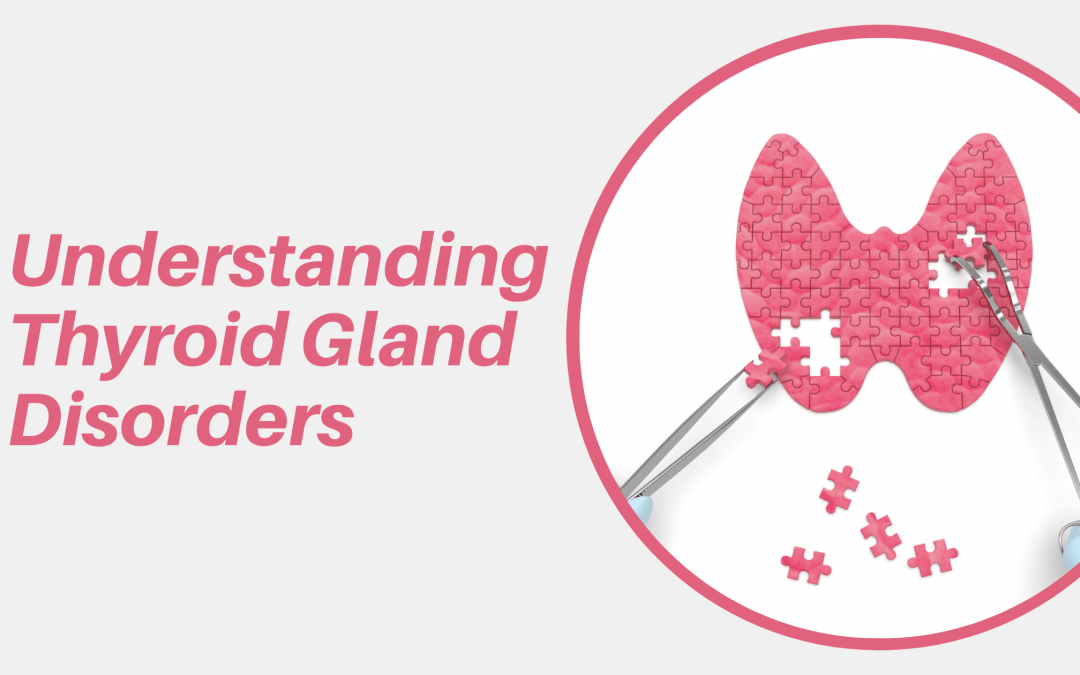Thyroid Gland Understanding the Thyroid Gland: Structure, Function, and DisorderThe thyroid gland structure, function, and disorders are essential to understand when exploring the endocrine system and its impact on the human body.”The thyroid gland is a small yet crucial component of the endocrine system, responsible for producing hormones that regulate various vital functions in the body, especially those related to metabolism. Its impact is far-reaching, influencing everything from energy levels to brain development and bone health.
Anatomy and Location of Understanding the Thyroid problems
The thyroid gland is situated at the front of the neck, just below the larynx (commonly referred to as the Adam’s apple). Its distinctive butterfly shape comprises two lobes—one on each side of the trachea (windpipe)—connected by a thin strip of tissue known as the isthmus. Under normal conditions, the thyroid is not visible or easily felt during a physical examination.
Primary Role of Understanding the Thyroid Gland
The thyroid produces hormones that regulate the body’s metabolic processes, influencing how fast or slow energy is used. These hormones are also essential for:
- Brain development (especially in infants and children)
- Maintaining healthy bones
- Regulating heart rate
- Supporting digestive function
- Muscle performance
- Growth and development
To produce these hormones, the thyroid relies on iodine, a trace element absorbed from the diet. Specialized cells in the thyroid actively absorb iodine from the bloodstream to synthesize its hormones.
Thyroid Gland Structure and Location in the Human Body
Hormone production in the thyroid gland is tightly regulated by a complex hormonal feedback system called the hypothalamic-pituitary-thyroid (HPT) axis.
- Anatomy of the Thyroid Gland
- (a region in the brain) secretes thyrotropin-releasing hormone (TRH).
- TRH stimulates the pituitary gland, located just beneath the brain, to release thyroid-stimulating hormone (TSH).
- TSH travels through the bloodstream to the thyroid, signaling it to produce and release thyroid hormones.
This feedback loop allows the body to fine-tune hormone levels according to changing physiological needs. For instance, if thyroid hormone levels drop, the pituitary gland increases TSH production to stimulate more hormone output from the thyroid.
ALSO VISIT
Thyroid Gland Function and Hormone Regulation
The thyroid gland produces three main hormones:
T3 and T4: Key Thyroid Hormones
- Thyroxine (T4): The primary hormone produced, though it’s largely inactive in this form.
- Triiodothyronine (T3): The active form of thyroid hormone. While only about 20% is produced directly by the thyroid, most T3 is created when T4 is converted into T3 in organs such as the liver and kidneys.
- Calcitonin: Produced by specialized cells known as C-cells, this hormone plays a minor but important role in calcium and phosphate balance, helping regulate bone health.
Thyroid Gland Disorders: What Can Go Wrong?
The thyroid typically maintains a careful balance of hormone production through the feedback loop described above. However, several conditions can disrupt this balance:
1. Hypothyroidism ) Thyroid Gland Function
Occurs when the thyroid doesn’t produce enough hormones.
Common symptoms:
- Happens when the thyroid produces too much hormone.
- Fatigue
- Weight gain
- Depression
- Cold intolerance
- Dry skin
- Slower heart rate
Common Thyroid Gland Disorders and Symptoms
- Weight loss
- Increased heart rate
- Nervousness or anxiety
- Sleep disturbances
- Tremors
- Heat intolerance
- Muscle weakness
- Changes in menstruation
- Eye irritation or bulging eyes (in some cases)
Both conditions can be associated with goitre, an abnormal enlargement of the thyroid gland.
Risk Factors for Thyroid Gland Structure and Function Imbalance
Thyroid disorders are very common, affecting over 200 million people worldwide. While they can occur at any age and in any gender, women are 5 to 10 times more likely than men to develop thyroid problems.Gender and Age Factors in Thyroid Diseases
Genetic and Environmental Influences on Thyroid Function
Causes of Thyroid function
Causes of Gland Disorders
- Thyroiditis: Inflammation of the thyroid, reducing its hormone-producing ability.
- Hashimoto’s Thyroiditis: An autoimmune condition where the immune system attacks thyroid tissue. Often hereditary.
- Postpartum Thyroiditis: Temporary thyroid inflammation following childbirth.
- Iodine Deficiency: A global health issue affecting around 100 million people.
- Surgical Removal or Radioactive Treatment: These can reduce or eliminate thyroid function.
- Pituitary Gland Disorders: May disrupt TSH production.
Causes of Thyroid Gland Disorders and Hormonal Imbalance
- Graves’ Disease: An autoimmune disorder causing the thyroid to become overactive.
- Thyroiditis (from viral infection): May trigger a temporary release of excess hormones.
- Excessive Iodine Intake: Overuse of iodine-rich medications or supplements can disrupt hormone levels.
- Thyroid Nodules: Some nodules may produce too much hormone; a small percentage may become cancerous.
Can You Live Without Your Thyroid Gland
Yes, individuals can live without a thyroid gland, especially in cases where it is removed due to cancer or other serious disorders. However, lifelong thyroid hormone replacement therapy is necessary to maintain normal metabolic function.
Maintaining a Healthy Thyroid Gland Health
Supporting thyroid health starts with adequate iodine intake. Although the body only needs small amounts of iodine, a consistent supply is essential.The Role of Iodine in Thyroid Hormone Production
Diet, Lifestyle, and Thyroid Health Maintenance
Importance of Thyroid Hormone Replacement Therapy
- Seafood (e.g., fish, seaweed)
- Dairy products
- Eggs
- Iodized salt
Caution: While iodine is essential, too much can be harmful and may worsen or trigger thyroid problems in some individuals.
Understanding Thyroid Gland Disorders
The thyroid gland, though small, plays a massive role in maintaining the body’s overall health. From regulating metabolism to supporting cognitive and skeletal functions, its hormones are vital. Understanding how the thyroid functions, recognizing symptoms of imbalance, and ensuring proper nutrition—especially iodine—are key to maintaining thyroid health and preventing disease.“By understanding the thyroid gland structure, function, and disorders, you can better recognize early signs of imbalance and seek timely treatment.
